Why Kids Like To Watch Videos On YouTube So Much
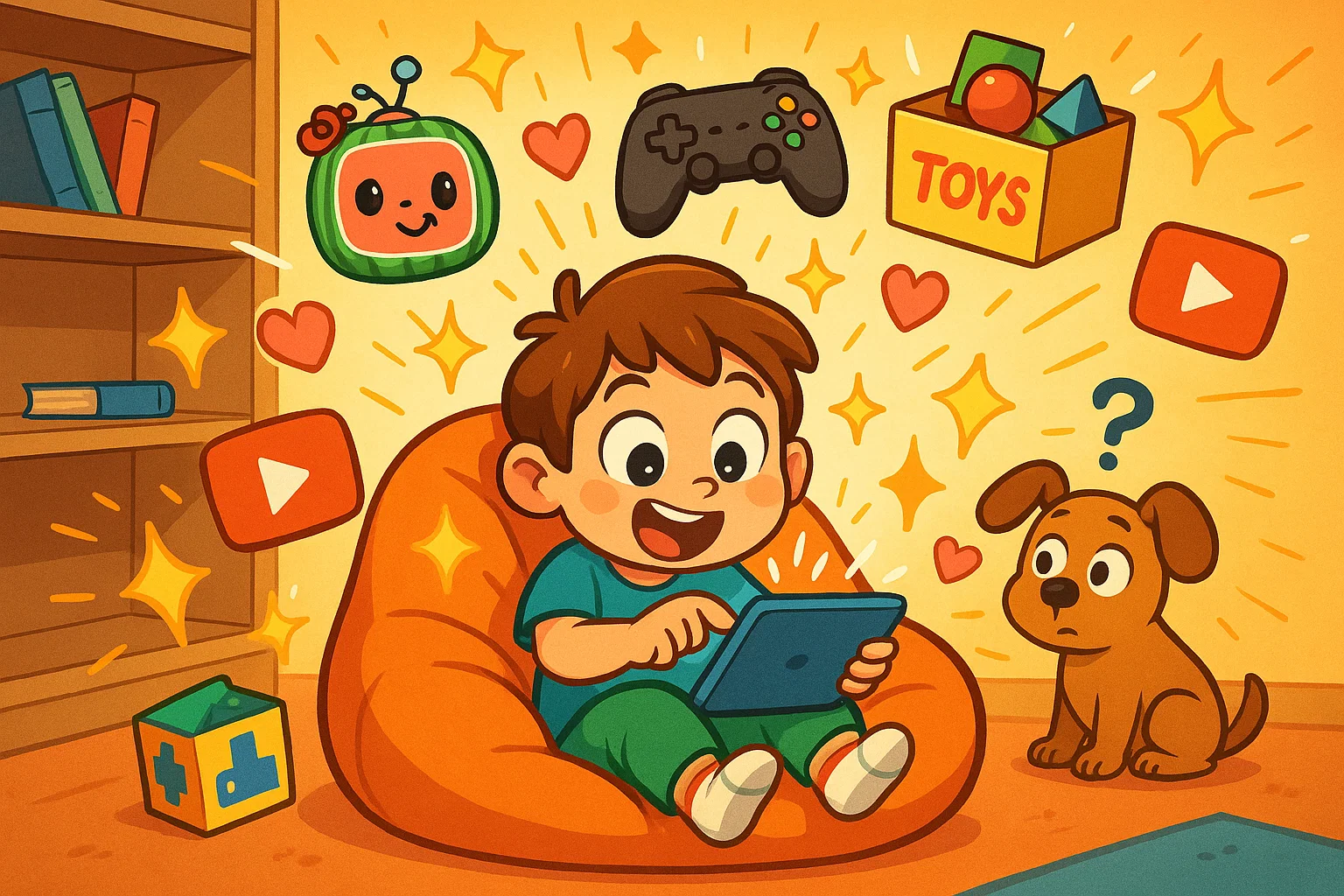
Kids often like to use YouTube and exhibit a strong inclination towards its content. This preference is due to a complex interplay of several factors:
- Psychological influences
- Social dynamics
- Technological elements
The platform’s unique appeal to kids is significant. According to the Winter 2024/2025 PARK report by Precise TV, YouTube commands 78% of viewership among U.S. children aged 2–12, significantly surpassing traditional broadcast television.
This attraction, common in the digital age, stems from its ability to cater to their developmental needs, desire for autonomy, curiosity, and quest for entertainment through an endless stream of videos and various things on YouTube that kids love.
Understanding these factors can help many parents and caregivers navigate their children’s engagement with the platform more effectively.
Role of Algorithm in Video Selection Kids Are Watching
YouTube’s algorithm, a sophisticated AI recommendation algorithm, plays a significant part in what kids are watching and how they consume videos. It often extends viewing sessions through sophisticated recommendation systems.
This automated curation aims to maximize engagement by presenting content it predicts a child will find appealing, directly influencing the types and quantity of videos children watch.
How recommendation chains create viewing loops
Autoplay functionalities and algorithmic chains are engineered to maintain attention. After watching just one video, the next video frequently commences automatically. This selection, often from similar kinds of videos, is based on what the algorithm deems similar or engaging for kids.
This mechanism, as noted in analyses of viewing habits, effectively keeps children engaged for extended periods. It continuously suggests related content, creating a continuous loop that can be difficult for a child to break away from.
Personalization based on watch history and behavior
YouTube’s system meticulously tracks several engagement metrics:
- Which videos a child watches
- The duration of viewing
- Likes and dislikes
- Skips
This behavioral data, derived from how kids use the platform and their YouTube history (part of their overall viewing history), is then used to tailor future recommendations, creating personalized content and enhancing the sense of control and choice young users experience.
The platform’s capacity to allow children to search for specific content and curate their own viewing aligns perfectly with expectations for media consumption in a generation accustomed to interactive experiences. If a child frequently watches content about a specific topic, like wanting to play video games or watching a favorite Paw Patrol character, the platform will surface more of that. This creates a highly personalized and often compelling stream of videos.
Contrast between algorithm-driven content and curated playlists
A notable difference exists when comparing algorithmically selected videos with playlists curated by humans, such as parents or educators. AI-driven selections prioritize engagement metrics, which may not always align with educational value or diversity of content for kids.
Human-curated playlists, conversely, can offer a more balanced selection, though they require active effort. This distinction is important, as the algorithm’s goal is sustained viewing, not necessarily holistic development.
Appeal of Gaming and Toy Review Channels 🧸
Many kids are particularly drawn to YouTube channels centered around gaming and toy reviews, including videos where people open toys or the popular surprise-egg videos. The fascination with unboxing videos, watching people playing games, and observing role-playing scenarios is a widespread phenomenon. This is partly fueled by the connection children form with creators.
Parasocial connection with young creators
Children often develop one-sided emotional attachments, known as parasocial relationships, with the YouTuber creators they follow. Research indicates that kids frequently view YouTubers as role models and consider their content to be a reliable source of information. A clear example is Ryan from Ryan’s World, whose cheerful toy reviews and playful challenges have earned him the trust and admiration of millions of young fans.
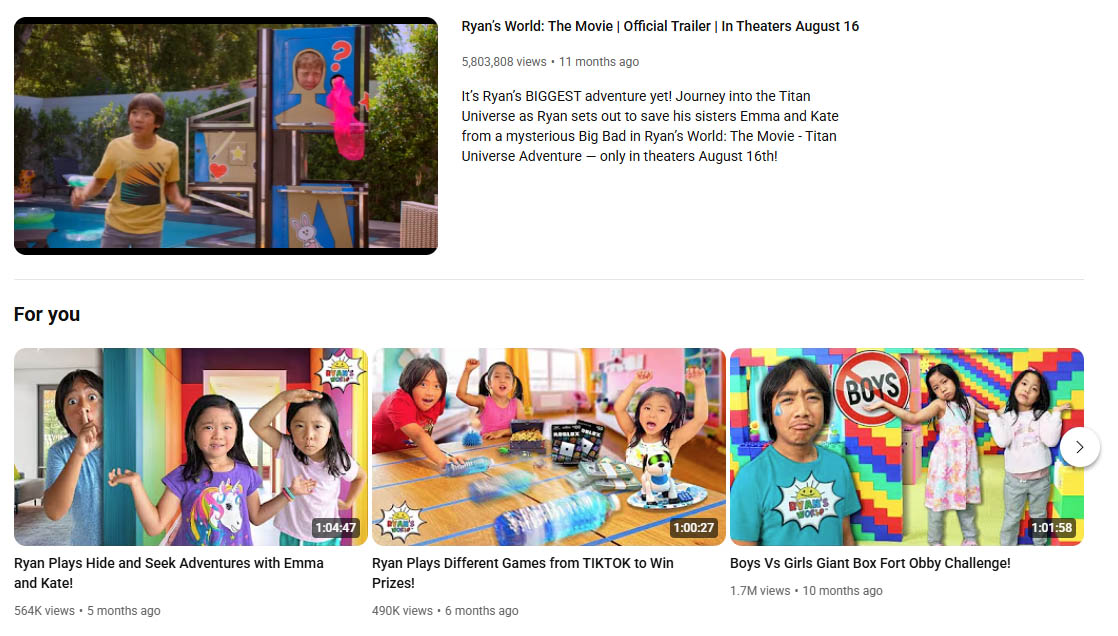
These creators, some of whom are young themselves, may feel like friends or older siblings. This perceived connection can be a powerful draw, making their videos highly relatable and engaging. This bond contributes significantly to YouTube’s “stickiness” with young audiences.
Role-play and imagination in toy-themed content
Toy review and play videos frequently depict imaginative scenarios that resonate with a child’s own creative inclinations. Watching others engage in role-play can inspire kids to replicate or expand on these narratives in their own playtime. These videos often showcase toys in dynamic ways that fuel a child’s desire to interact with similar items, effectively mirroring creative play.
Why watching others play feels interactive
The experience of watching someone else play a game or interact with toys can feel surprisingly interactive for kids. This is due to vicarious experience, where the viewer feels involved in the activity.
Cognitive engagement occurs as children anticipate outcomes, learn strategies (in gaming videos), or mirror the emotions of the on-screen personality. This makes passive viewing of these videos feel more active.
Instant Gratification and Attention Design
The design of YouTube, where kids can scroll endlessly through content, and much of its material for children, caters effectively to shorter attention spans and a preference for immediate rewards. This can lead to kids wanting to watch hours of video and sometimes even a tantrum if access is denied. The rise of short-form video content, like YouTube Shorts, has dramatically increased this appeal.
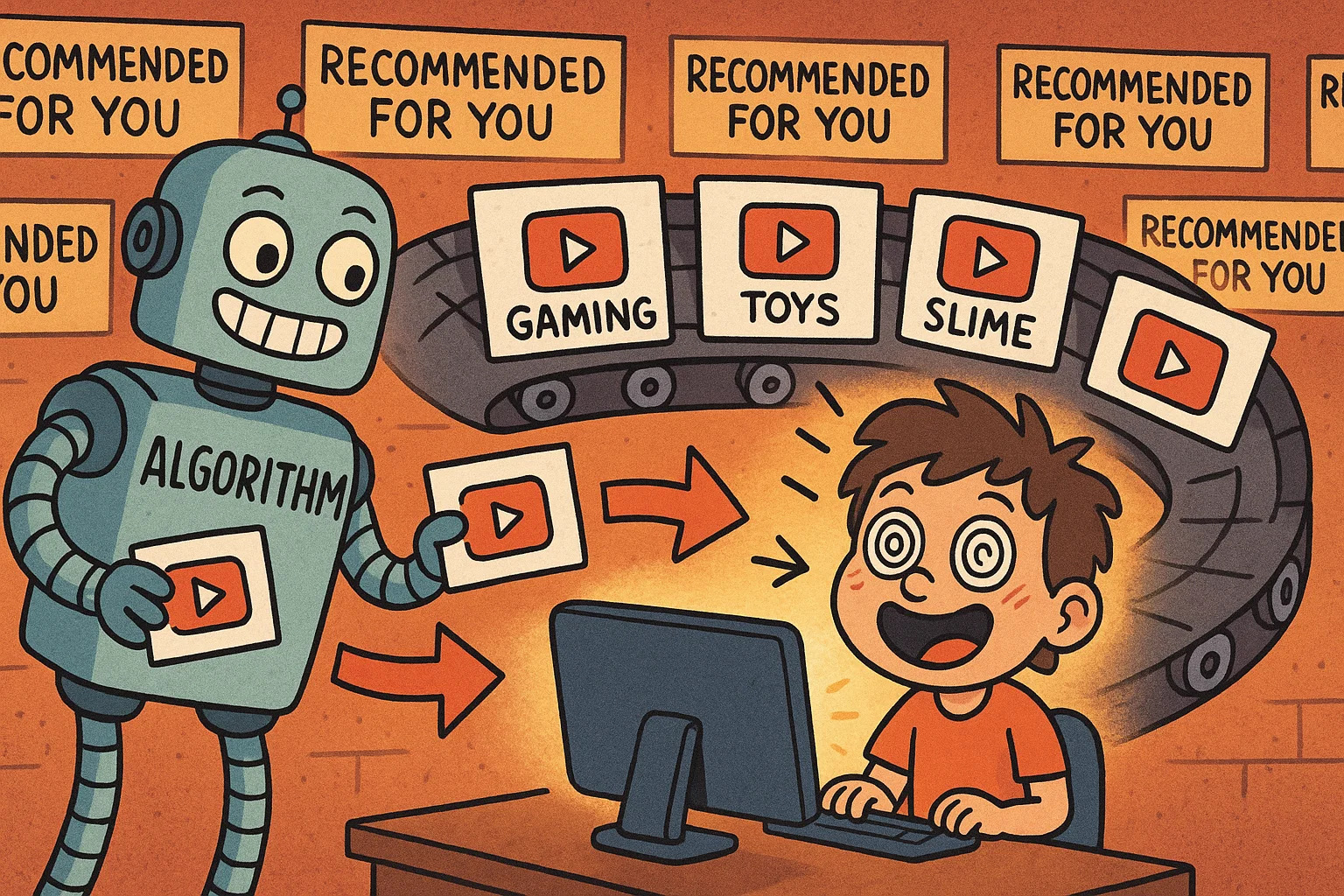
Recent industry reports indicate that the platform has seen significant growth. As of 2023, YouTube Shorts reached 70 billion daily views, compared to 30 billion daily views in 2022. This growth reflects a 133% increase in daily views within a year. Additionally, YouTube Shorts has more than 2.0 billion monthly active users.
Bright visuals and fast pacing as engagement tools
Many videos created for kids utilize:
- Bright, saturated colors
- Rapid scene changes (jump cuts)
- High levels of stimulus
These editing techniques are designed to capture attention. The visual intensity and fast pacing can make the content feel exciting and prevent boredom, particularly for younger viewers accustomed to such stimulation from various YouTube videos.
Reward systems built into content patterns
Content for kids on YouTube often incorporates subtle reward systems, emphasizing humor and sensory experiences. This might involve cycles of mild tension followed by a satisfying resolution, surprise elements, or the achievement of a goal within a game or narrative.
These patterns keep children invested in the videos, anticipating the next “reward.” Nearly half (48%) of children engage in binge-watching YouTube content, a behavior that increases with age. This speaks to both the platform’s design and the compelling nature of its videos.
Impact on attention span and boredom tolerance
Some research suggests that prolonged exposure to fast-paced media might influence attention spans and boredom tolerance in some kids. For example, a 2011 study by Lillard and Peterson published in Pediatrics found that fast-paced television viewing by 4-year-olds had immediate negative effects on executive function.
While more research is needed specifically on modern YouTube videos, the principle of rapid, constant stimulation is a point of consideration. It is plausible that children accustomed to such high levels of input may lose interest more quickly in slower-paced, real-world activities, and some may even seem addicted to YouTube.
Emotional and Cognitive Resonance 😊
Certain video formats captivate young viewers for developmental reasons. YouTube content often aligns with how kids learn and process information, creating a strong emotional connection. It frequently emphasizes hedonic dimensions that make children laugh or feel excited.
How repetition supports cognitive development
Repetition is a cornerstone of early learning, aiding in memory formation and skill acquisition. Many YouTube videos for kids, like the songs found in Cocomelon or the lessons in Daniel Tiger, feature repetitive songs, phrases, or narrative structures, often serving as a form of educational content.
“Experience sculpts the brain — repetition strengthens neural connections, especially during critical periods of development.”
Dr. Patricia Kuhl.
Familiar formats and characters create emotional safety
Predictability offers security to young kids. Familiar video formats, recurring characters like those in Paw Patrol, and predictable theme songs create an environment of emotional safety on YouTube. Knowing what to expect allows children to relax and engage with the content confidently because they like the videos.
This is why many kids will want to watch the same YouTube videos multiple times.
Curiosity and desire for predictability in preschool minds
A preschooler, and even a toddler, possesses a burgeoning curiosity, yet they also thrive on routine and predictability. Successful YouTube content for this age group often balances novelty with familiarity in its videos.
New adventures featuring known characters, or slight variations on a recognizable theme, can satisfy both the desire to explore and the need for comfort.
Social Learning and Identity Formation
Kids come to YouTube and utilize its videos as a source for understanding social norms, observing behaviors, and gauging peer culture. This platform can therefore influence aspects of their social learning and identity formation. Studies have found that children admit to having changed their thinking because of YouTubers.
Mimicry and behavior modeling from influencers
Children are prone to mimicking behaviors they observe. YouTube influencers, through their videos, can become significant role models for kids. Young viewers may adopt their idols’ language, fashion choices, attitudes, and even consumer preferences. This modeling can be positive, but it also carries the risk of children emulating less desirable behaviors or speech patterns showcased in certain videos, potentially impacting social aspects of human development in the school years.
Exposure to unrealistic lifestyles and expectations
Many YouTube videos, especially vlogs or content from wealthy influencers, can present highly curated portrayals of life. Consistent exposure to such content might lead some kids to develop unrealistic expectations about material possessions, lifestyles, or social success. This can, in certain instances, contribute to feelings of inadequacy when comparing their lives to those in the videos.
Influence of peer trends and digital word-of-mouth
Viral videos and trending challenges on YouTube quickly disseminate through peer groups. The desire among kids to participate in what their friends are watching or discussing drives many to seek out specific content. This digital word-of-mouth amplifies trends and can exert considerable social pressure related to YouTube consumption.
Content Accessibility and Mobile Use 📱
The ubiquitous nature of YouTube, often via the YouTube app on various devices, particularly mobile ones, significantly contributes to its consumption by kids. The ease with which videos are easily accessible is a major factor.
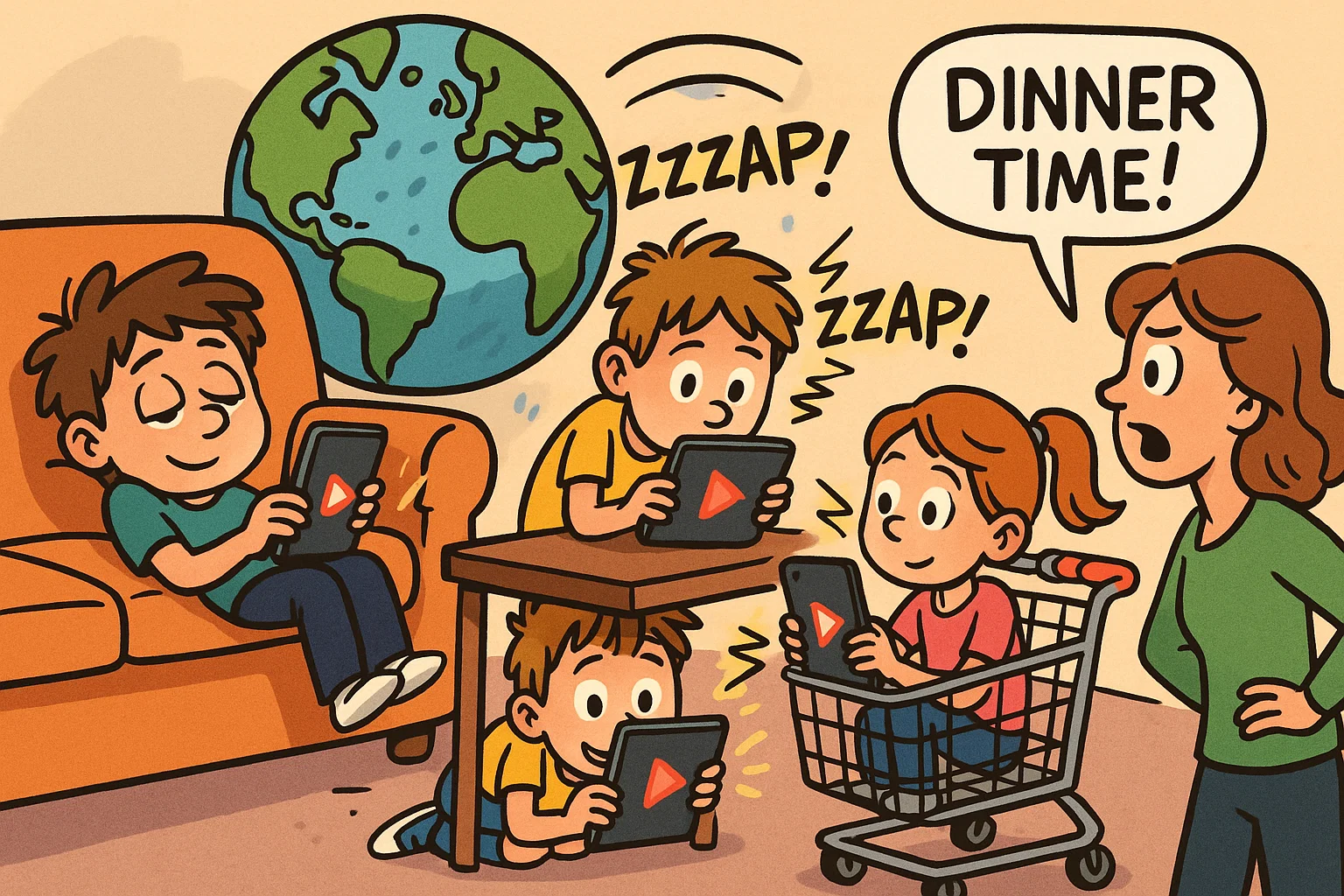
Current usage patterns show device preferences:
- Approximately 64% of children use mobile phones.
- Around 59% use tablets.
- About 51% use television screens.
Impact of mobile-first habits on screen time volume
The portability of smartphones and tablets means YouTube videos can be watched almost anywhere and anytime. This mobile-first accessibility often translates to increased overall screen time.
According to the report, children watched 27% more video content in 2023 than in the previous year, reaching a world average of 57 minutes per day across various platforms, including YouTube, Netflix, and Disney+
YouTube As Default Babysitter In Daily Routines
For some parents, YouTube videos have become a tool to occupy kids during household chores or errands. While offering convenience, this reliance can lead to patterns where screen time becomes the default rather than a deliberate choice. This potentially displaces other valuable developmental activities for kids.
Offline viewing, autoplay, and parental control limits
Features like offline downloads allow kids to watch videos without internet. While YouTube offers parental controls, and the YouTube Kids app provides a more restricted, purportedly kid-friendly and age-appropriate environment, these are not always foolproof. Autoplay continues to be a factor in extended viewing of videos, and navigating control settings can be challenging.
Safety and Marketing Exposure Risks ⚠️
Alongside entertainment and educational opportunities, YouTube presents certain challenges. These are particularly concerning safety and commercial exposure for kids watching videos.
Here’s a brief overview of key risks:
| Risk Category | Description |
| Disguised Advertising | Content like unboxings blurs lines between entertainment and marketing, making kids susceptible. |
| Inappropriate Content | Despite filters, unsuitable videos can slip through, posing a risk of exposure to harmful material. |
| Data Privacy Concerns | Collection of viewing data on kids raises privacy questions, especially on the main YouTube platform. |
Advertising disguised as entertainment
A significant portion of content popular with kids, such as toy unboxing videos that often function like stealthy toy commercials, or sponsored gameplay, can blur the lines between entertainment and advertising. Young children, in particular, may struggle to differentiate between organic content and paid promotions within these videos. This makes them susceptible to sophisticated marketing.
Inappropriate content slipping through filters
Despite algorithmic filtering and human moderation, instances of inappropriate videos—the kind kids don’t (or shouldn’t) encounter—appearing on YouTube, and sometimes even on YouTube Kids, have been documented.
These incidents highlight the challenges in effectively policing the vast amount of content—with some estimates suggesting 300 hours of video or even more hours of video uploaded to YouTube every minute—uploaded daily. This poses a risk that kids may encounter material unsuitable for their age.
Differences between YouTube and YouTube Kids safety levels
YouTube Kids is designed as a safer environment, offering more stringent filters and different ad models for its videos. However, the main YouTube platform provides access to a much broader, less controlled range of videos.
Protections on YouTube Kids are not absolute, and the content landscape differs significantly. Collection of viewing history data on kids raises online privacy questions, drawing scrutiny from bodies like the Federal Trade Commission, especially on the main YouTube platform.
Popular Genres Kids Like Watching on YouTube by Age Group
The types of YouTube videos kids prefer often vary by developmental stage. Content preferences also show some variation by gender; for instance, boys often gravitate toward gaming videos, while girls may prefer cartoons and music more frequently.
| Age Group | Dominant Genres | Key Characteristics |
| Preschool | Nursery rhymes, alphabet/counting songs, color videos | Repetitive, musical, visually simple, focused on foundational learning. |
| Early School | Toy unboxings, challenge videos, simple role-plays | Mimicry of daily life, aspirational play, peer-influenced trends. |
| Tweens | Vlogs, how-to tutorials, gaming commentary, DIY crafts | Social narratives, skill acquisition, personality-driven content. |
Preschool trends – songs, colors, learning videos
For preschoolers, YouTube is often a source of musical and foundational learning content. Animated videos featuring catchy songs about letters, numbers, animals, and colors are immensely popular with these young kids; popular trends they like to watch include songs, colors, and learning videos.
Early school-age trends – unboxings, challenges, roleplays
Kids in early elementary school frequently gravitate towards videos involving toy unboxings, simple challenges, and role-playing scenarios.
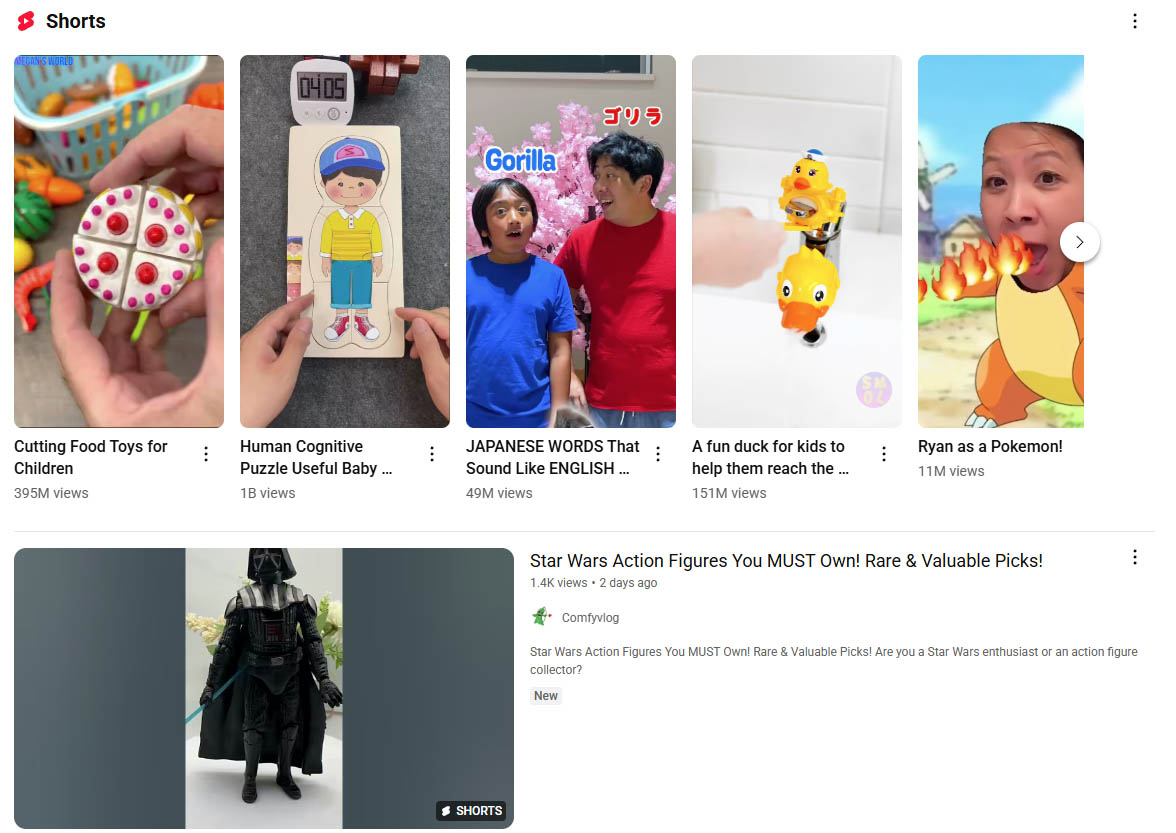
These YouTube videos often feature child influencers or relatable family dynamics.
Tween interests – vlogs, how-tos, gaming commentary
As kids enter the tween years, their YouTube preferences often shift towards more complex videos. Vlogs, instructional how-to videos, and gaming commentary channels become popular, allowing exploration of niche interests.
Parenting Strategies for Healthier Viewing 👍
Managing how kids keep returning to YouTube and their consumption patterns requires understanding their motivations. Research indicates parents tend to view children’s YouTube use more instrumentally (e.g., for education or convenience).
Children, however, often emphasize entertainment and humor—the autotelic nature of their engagement.
Here are some strategies:
- Set clear time limits for screen time devoted to videos.
- Practice co-viewing, where parents watch YouTube with their kids to discuss content.
- Teach media literacy from a young age.
- Encourage alternative activities beyond passive video consumption.
Setting time limits and co-viewing practices
Establishing clear boundaries for screen time devoted to videos is a foundational step. Co-viewing, where parents watch YouTube with their kids, allows for discussion about content. This helps children process what they see and provides opportunities to reinforce family values.
Teaching media literacy from a young age
It is beneficial to help kids develop critical thinking skills regarding the videos they watch on YouTube. Conversations can address:
- The difference between reality and staged content.
- The purpose of advertising.
- How to identify trustworthy information.
This empowers children to be more discerning viewers.
Alternatives to passive watching: interactive and educational apps
Encouraging a variety of activities beyond passive video consumption is important for kids. There are many interactive and educational apps and platforms. These can serve as engaging alternatives or complements to YouTube videos, often designed with specific learning outcomes.
Parents Also Ask
What should parents need to know about potentially detrimental online content for their children?
It’s important to be aware of and filter for explicit material or inappropriate videos. Exposure to such content can be harmful to a child’s development.
How can I ensure apps on an Android device are developmentally appropriate if I don’t know all the specific apps my child might want to see?
Regularly review installed applications and utilize the parental control settings available on the device and within app stores. Open communication about online safety is also key.
Why does my teenager seem more interested in social media-style interaction and seeing a creator's reaction than watching a traditional TV show?
This is a common trend. The fast-paced, interactive nature of social media, along with the perceived authenticity of creator reactions, often appeals more to teenagers than the passive experience of watching a scheduled TV program.
What's the particular appeal of watching videos of other kids playing games like Minecraft, sometimes even over a new episode of their favorite tv program?
Many children enjoy these videos because they are relatable, offer tips and tricks, and showcase gameplay from a peer’s perspective. They often like many different creators within this genre, making it a vast source of entertainment.
My child’s online favorites include so many different things, from short skits to gaming streams. Is this viewing pattern different from how an adult might choose what to watch on TV?
Yes, children often explore a wider variety of content and may have more eclectic tastes compared to adults, who might have more established preferences for specific genres or longer-form television series.
With so much online content available, do children today still like movies in the traditional sense?
While online short-form content is very popular, many children definitely still enjoy watching movies, whether at home or in a cinema, especially those that are well-marketed or feature popular characters and stories.
